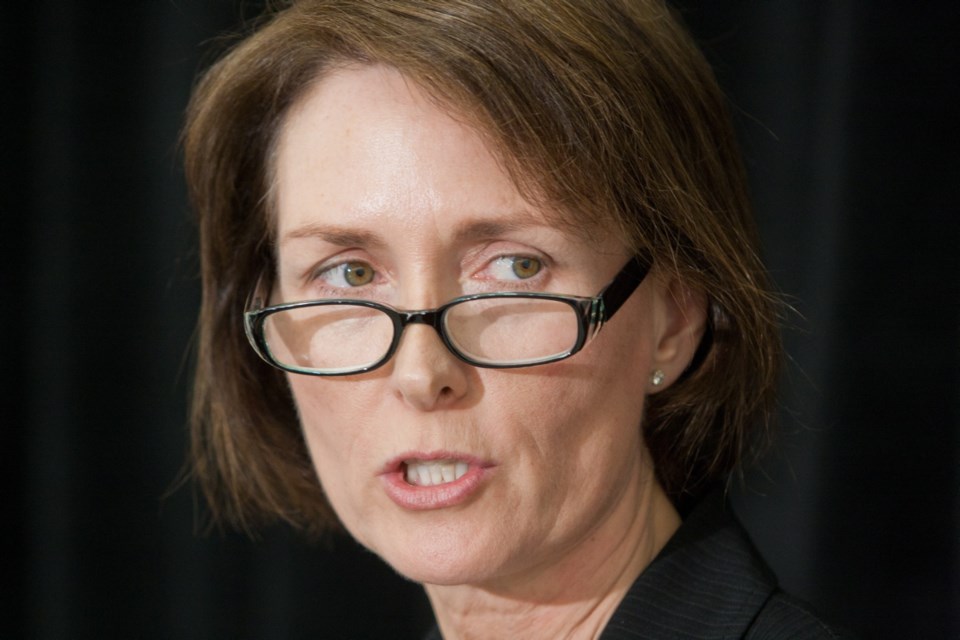 The story of the 11-year-old profoundly disabled boy who was tasered by police in Prince George after he stabbed a caregiver three years ago continues to echo through the child-welfare system.
The story of the 11-year-old profoundly disabled boy who was tasered by police in Prince George after he stabbed a caregiver three years ago continues to echo through the child-welfare system.
It prompted a review by representative for children and youth Mary Ellen Turpel-Lafond, who ripped the ministry in a 2013 report for repeated failures in caring for the child.
It also sparked a subsequent wider-ranging look at how the highest-need children in the care of the government are being handled. Turpel-Lafond released that report on Wednesday and there’s not much encouraging in it.
Children traumatized through abuse or neglect, some with disabilities, have complex care needs that require all manner of services and placement with thoroughly trained caregivers.
“At the very least, they need a safe place to live so that they can be shielded from further harm,” said Turpel-Lafond.
But she said even that basic need often has gone unmet. There are about 1,400 such children in Level 3 foster care and contracted placements. Based on 49 reports of critical injuries and deaths involving young people in 2011, Turpel-Lafond picked a sampling of 31 and checked the arrangements in place for those clients.
Lack of funds and a shortage of qualified people mean they might not get the services they need to thrive. Aboriginal children, who are hugely over-represented in the system, don’t get proper cultural planning to the point where she flagged a “nearly complete abandonment of culturally appropriate services.”
Turpel-Lafond said in the cases she reviewed, the young people were “often re-traumatized rather than helped, re-victimized rather than protected.”
Children and Family Development Minister Stephanie Cadieux said the report does not reflect her ministry’s most recent and ongoing work in that area. All the specific cases cited were the subject of numerous interactions between the ministry and Turpel-Lafond, she said. And the ministry is working to address the key themes.
One case cited Wednesday brought home how difficult life is for some children, and how short the ministry fell in trying to help.
It was about a non-aboriginal boy (given the pseudonym “Dean”) born into domestic violence and instability. The mentally ill mother called the ministry when he was four because she couldn’t manage him. She reported that his challenging behaviours made her think it might be better to kill him.
Services and counselling were provided, he saw a psychiatrist and got a number of assessments at school and was diagnosed with multiple problems at age 11. He was later hospitalized multiple times for self-harm.
He was taken into the government’s care at 14 and put in a Level 3 foster home a year later.
Turpel-LaFond said the foster father didn’t want his own children exposed to the child, so he set him up in a separate nearby house, minding him during the day and hiring staff to care for him at night.
Dean disclosed sexual assault by a night caregiver who had just been fired for a drug relapse. The ministry investigated and found the foster parent had not done criminal record checks and had hired people he met through Narcotics Anonymous or in coffee shops.
The foster home was shut down.
Turpel-Lafond said the sexual abuse happened because the ministry didn’t fulfil its responsibility to adequately study and monitor the foster home.
It just compounds their challenges by isolating them and giving them substandard treatment, she said.
She recommended more oversight and is going to talk to the auditor general about doing a performance audit in the field to see if money spent is producing optimal outcomes.
It’s obvious what she thinks such an audit would find. The cost of drifting toward poverty, incarceration and victimization are far higher than the cost of putting together a comprehensive residential-care system for the highest-risk children.
Just So You Know: As for the tasered 11-year-old, Turpel-Lafond said it’s “touch and go” for the boy, now 14.
He’s currently in an expensive “one-off” care situation. “We will be actively involved in his care for some time,” she said.



